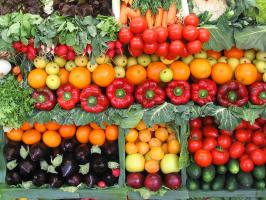Can You Use In Ground Soil for Potted Plants?
If you have ever faced the dilemma of having leftover in-ground soil after gardening, you might have considered using it in your potted plants. While it may seem like a practical solution, it is essential to examine the differences between in-ground soil and potting soil to ensure the best growing conditions for your potted plants.
Differences Between In-Ground Soil and Potting Soil
In-ground soil is the natural soil found in the ground, made up of a mixture of sand, silt, and clay. This type of soil is designed to support trees, shrubs, and other plants that grow directly in the ground. Potting soil, on the other hand, is a specially formulated mix created to help plants thrive in containers. It usually contains a blend of peat, perlite, vermiculite, and other organic matter.
The main differences between these two types of soil are drainage and nutrients. In-ground soil has excellent drainage but may lack essential nutrients. Potting soil, on the other hand, has a blend of nutrients that potted plants require. Additionally, potting soil has better moisture retention capabilities than in-ground soil, which is an essential factor in growing healthy plants.
Can You Use In-Ground Soil for Potted Plants?
While in-ground soil may seem like a viable option to use in potted plants, there are several reasons why this may not be a good idea. In-ground soil does not have the same moisture retention capacity as potting soil, leading to drainage problems in containers. The soil in a container needs to have a balance of moisture for the plant's roots to absorb water effectively. By using in-ground soil, the soil may become overly compact and heavy, leading to poor drainage and root rot.
In-ground soil may also contain insects and plant diseases that can harm potted plants. These unwanted organisms can be difficult to eliminate from the soil, which may lead to significant problems for your potted plants. It is also important to note that in-ground soil may not have the same balance of nutrients that potting soil has, leading to inadequate growth and plant health.
Alternative Solutions
If you have leftover in-ground soil and want to use it for potted plants, there are ways to reduce the risk of problems. One solution is to amend the soil with organic matter, such as compost or peat moss. This will improve the soil's nutrient balance and moisture retention, making it better suited for potted plants.
Another solution is to use a blend of in-ground soil and potting soil. This combination can create a balance between good drainage, moisture retention, and nutrients, helping your potted plants thrive. However, it is crucial to remember that in-ground soil can still contain insects and plant diseases, so it is vital to inspect it thoroughly before use.
Conclusion
In summary, while in-ground soil may seem like a viable option for potted plants, it is not recommended. The differences in moisture retention, drainage, and nutrient composition between in-ground soil and potting soil may cause problems for potted plants. Instead, consider amending the soil with organic matter or using a blend of in-ground soil and potting soil to ensure healthy growth for your potted plants.

 how many times do yo...
how many times do yo... how many planted tre...
how many planted tre... how many pine trees ...
how many pine trees ... how many pecan trees...
how many pecan trees... how many plants comp...
how many plants comp... how many plants can ...
how many plants can ... how many plants and ...
how many plants and ... how many pepper plan...
how many pepper plan...































